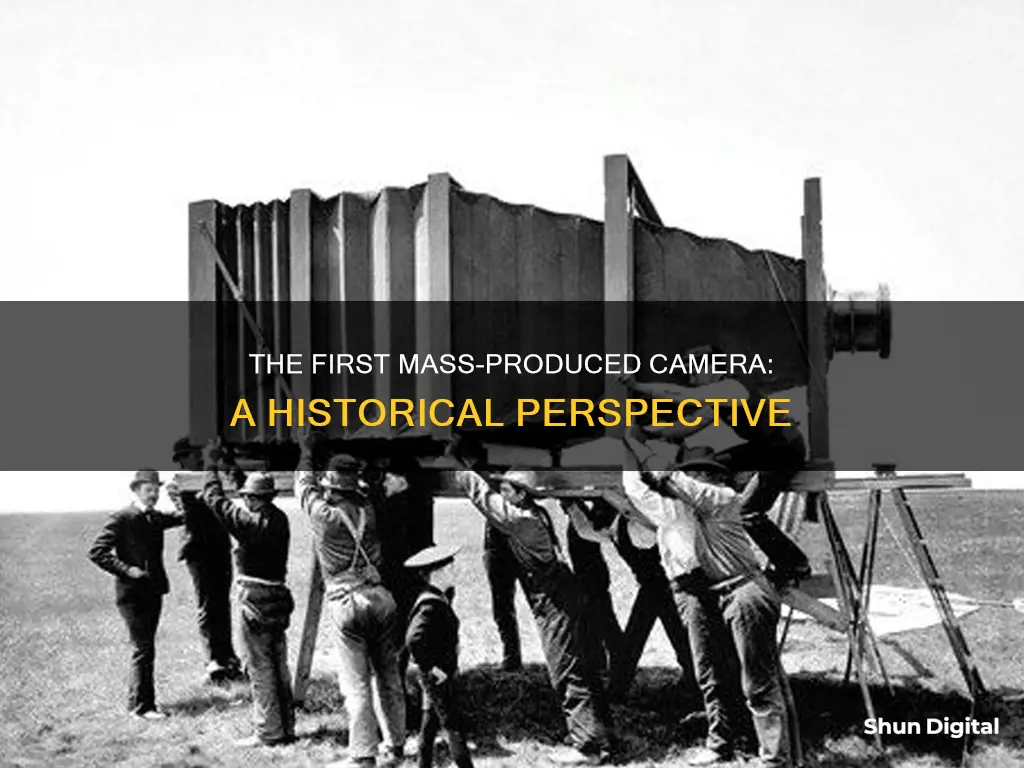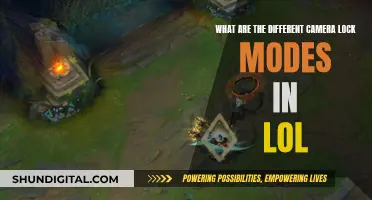
The history of the camera is a long and fascinating one, spanning centuries and involving numerous inventors and pioneers. The first camera, or more accurately, the first device for creating images, was the camera obscura, which means dark chamber in Latin. This device was a precursor to modern photography and involved projecting an image through a small opening onto a surface inside a room-sized structure or box. The earliest written record of the camera obscura dates back to the 4th century BCE and is attributed to Aristotle in Greece and Mozi in China.
The first portable photo device was designed by Johann Zahn in 1685. However, it wasn't until 1816 that the first photographs were taken by Joseph Nicephore Niepce using a device he built with silver chloride-coated paper. These images were non-permanent and were negatives, darkest where the camera image was lightest.
The first camera to take a permanent photograph was invented by Niepce in 1826 or 1827. This photograph captured the view out of the window of his home in France and required at least eight hours of exposure time. Niepce's work laid the foundation for the development of modern photography and inspired other inventors to create more advanced cameras.
| Characteristics | Values |
|---|---|
| Date of invention | 1816 |
| Inventor | Joseph Nicéphore Niépce |
| Type of camera | Camera obscura |
| Image type | Negative |
| Image permanence | Non-permanent |
| Image material | Silver chloride-coated paper |
| Image colour | Black and white |
| Image clarity | Blurry |
What You'll Learn
- The first camera was invented in 1816 by Joseph Nicephore Niepce
- The first photograph was taken in 1826 by Niepce
- The first camera obscura was created by Ibn al-Haytham in the 11th century
- The first mass-marketed camera was the daguerreotype, produced in 1839
- The first digital camera was invented in 1975 by Steven Sasson

The first camera was invented in 1816 by Joseph Nicephore Niepce
Niepce's early work included the invention of the world's first internal combustion engine in 1807, which he called the pyreolophore. However, it is his experiments with photography that he is best known for.
Niepce's initial experiments with photography began around 1816. He was interested in using light-sensitive materials to produce images directly on a printing plate or stone. Niepce coated a pewter plate with a solution of bitumen of Judea (a type of asphalt) and exposed it to light in a camera obscura. The bitumen became hard and insoluble in the areas exposed to light. After exposure, the plate was washed in lavender oil and turpentine, which removed the soft unexposed bitumen, leaving a permanent image created by light.
Niepce called his process heliography, from the Greek helios, meaning 'drawing with the sun'. In 1826 or 1827, he used this process to create the earliest surviving photograph—a view from a window of his house in Chalons-sur-Saône, which required an exposure of about 8 hours. This image is now preserved as part of the Gernsheim Collection at the University of Texas.
Niepce's early experiments with photography built upon centuries of contributions from other inventors. The camera obscura, meaning 'dark room' or 'dark chamber' in Latin, is considered the first camera ever created. However, it did not produce images; instead, it projected an inverted image of the outside scene onto an adjacent wall through a small hole. Niepce adapted this technology to generate a photographic plate, thus creating the first camera.
The Evolution of Pinhole Cameras: A Historical Perspective
You may want to see also

The first photograph was taken in 1826 by Niepce
The first photograph was taken in 1826 by Joseph Nicéphore Niépce, a French inventor and one of the earliest pioneers of photography. Niépce developed heliography, a technique he used to create the world's oldest surviving products of a photographic process.
In the mid-1820s, Niépce used a primitive camera to produce the oldest surviving photograph of a real-world scene. The photograph was taken from an upstairs window of his country house, Le Gras, and shows the outbuildings, trees, and landscape. The image was captured on a pewter plate coated with bitumen of Judea, an asphalt derivative of petroleum, and required an eight-hour exposure. Niépce referred to this process as "heliography" or "sun writing".
Niépce's interest in photography stemmed from his fascination with the newly invented art of lithography, which swept over France in 1813. He also experimented with the camera obscura, a drawing aid that was popular among affluent dilettantes in the late 18th and early 19th centuries.
In 1829, Niépce formed a partnership with Louis-Jacques-Mandé Daguerre, and they worked together to perfect the heliographic process. Unfortunately, Niépce died in 1833, before witnessing the enormous economic success that Daguerre later achieved by adapting his original design. Daguerre invented the daguerreotype, which became the first mass-marketed camera in 1839.
Building a Camera Battery: Ion Basics and Beyond
You may want to see also

The first camera obscura was created by Ibn al-Haytham in the 11th century
The first camera, or the camera obscura, meaning "darkened room" in Latin, was invented in the 11th century by Ibn al-Haytham, also known as Alhazen. Al-Haytham was a scientist, mathematician, astronomer, and philosopher who wrote the Book of Optics. He is also credited with inventing the pinhole camera.
The camera obscura is a device in the shape of a box or room that lets light through a small opening on one side and projects it on the other. The image outside the box is projected upside down. More complex cameras can use mirrors to project images upwards and right-side up and have lenses. The camera obscura was used as an aid for drawing and entertainment.
The oldest mention of the camera obscura's effect is by Mozi, a Chinese philosopher, during the 5th century BC. He noticed that an image from the camera obscura is flipped upside down and from left to right due to light moving in a straight line. The Greek philosopher Aristotle also observed in the 4th century that light from a solar eclipse passing through holes between leaves projects an image of an eclipsed sun on the ground.
Al-Haytham provided the first correct analysis of the camera obscura, offering the first geometrical and quantitative descriptions of the phenomenon. He was the first to utilize a screen in a dark room for image projection from a hole in the surface. He was also the first to understand the relationship between the focal point and the pinhole and was the pioneer of early afterimage experiments.
The work of Al-Haytham on optics played a significant role in inspiring notable individuals such as Witelo, John Peckham, Roger Bacon, Leonardo da Vinci, René Descartes, and Johannes Kepler.
Point-and-Shoot Cameras: Can They Shoot RAW?
You may want to see also

The first mass-marketed camera was the daguerreotype, produced in 1839
The daguerreotype was an early form of photo camera. It produced a highly detailed, unique image on a sheet of copper plated with a thin coat of silver without the use of a negative. The process required great care and was complex. First, a silver-plated copper plate had to be cleaned and polished until the surface looked like a mirror. Then, the plate was sensitized in a closed box over iodine until it took on a yellow-rose appearance. The plate, held in a lightproof holder, was then transferred to the camera. After exposure to light, the plate was developed over hot mercury vapour until an image appeared. To fix the image, the plate was immersed in a solution of sodium thiosulphate or salt and then toned with gold chloride.
The daguerreotype was extremely popular. The French government purchased the rights to the design in exchange for a life pension for Daguerre and his son. France then presented the technology, and the science behind it, as a gift free to the world. This only increased interest in the technology, and soon every wealthy household took advantage of this new device. By 1850, there were over 70 daguerreotype studios in New York City alone.
The daguerreotype was almost completely superseded by 1856 with new, less expensive processes, such as the ambrotype, that yielded more readily viewable images. However, there has been a revival of the daguerreotype since the late 20th century by a small number of photographers interested in making artistic use of early photographic processes.
Reviving Your Camera Battery: Charging from Zero
You may want to see also

The first digital camera was invented in 1975 by Steven Sasson
The history of the camera is a long and fascinating one, with many innovations and inventors contributing to its development over centuries. The first camera, or camera obscura (meaning "dark room" in Latin), was invented over 2000 years ago by Han Chinese philosopher Mozi. This early device projected an inverted image through a small aperture but required manual tracing to preserve the picture, as no photographic processes had been discovered yet.
Fast forward to the 19th century, and French inventor Nicephore Niepce created the first camera to take a permanent photograph in 1816. Niepce experimented with various substances before settling on a "film" made from "Bitumen of Judea," a semi-solid form of oil mixed with pewter. This allowed him to create a permanent image, although it was quite blurred.
The next significant advancement came with the invention of "film." In 1888, American entrepreneur George Eastman created the first camera to use a single roll of paper (and later celluloid) film, aptly named "The Kodak." This camera could capture sharp negative pictures, and its popularity helped propel photography into the homes of the middle class.
However, the real game-changer came in 1975 with the invention of the first digital camera by Steven Sasson, an engineer at Eastman Kodak. Sasson's digital camera was self-contained, portable, and battery-operated, weighing about 8 pounds (3.6 kg). It used a Fairchild CCD image sensor with a resolution of 0.01 megapixels (100 x 100 pixels) and recorded black-and-white images onto a cassette tape. The process of capturing each image took 23 seconds.
While Sasson's digital camera was a groundbreaking invention, Kodak surprisingly chose not to commercialize it. Nevertheless, it paved the way for the digital cameras that would soon revolutionize the way images are captured, processed, and shared, forever changing the world of photography.
High-Res Mode: Unlocking the Power of Pen F Camera
You may want to see also







